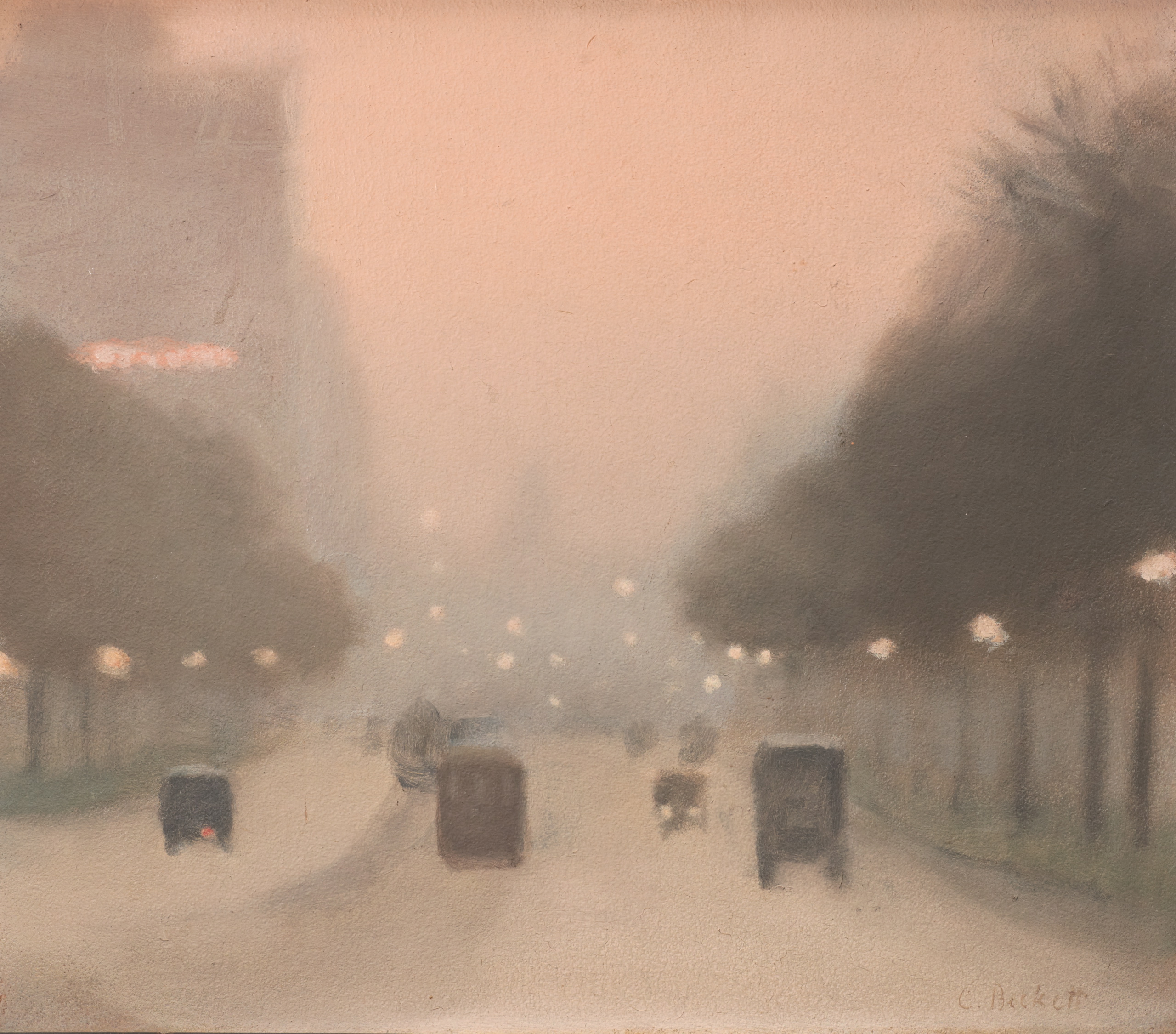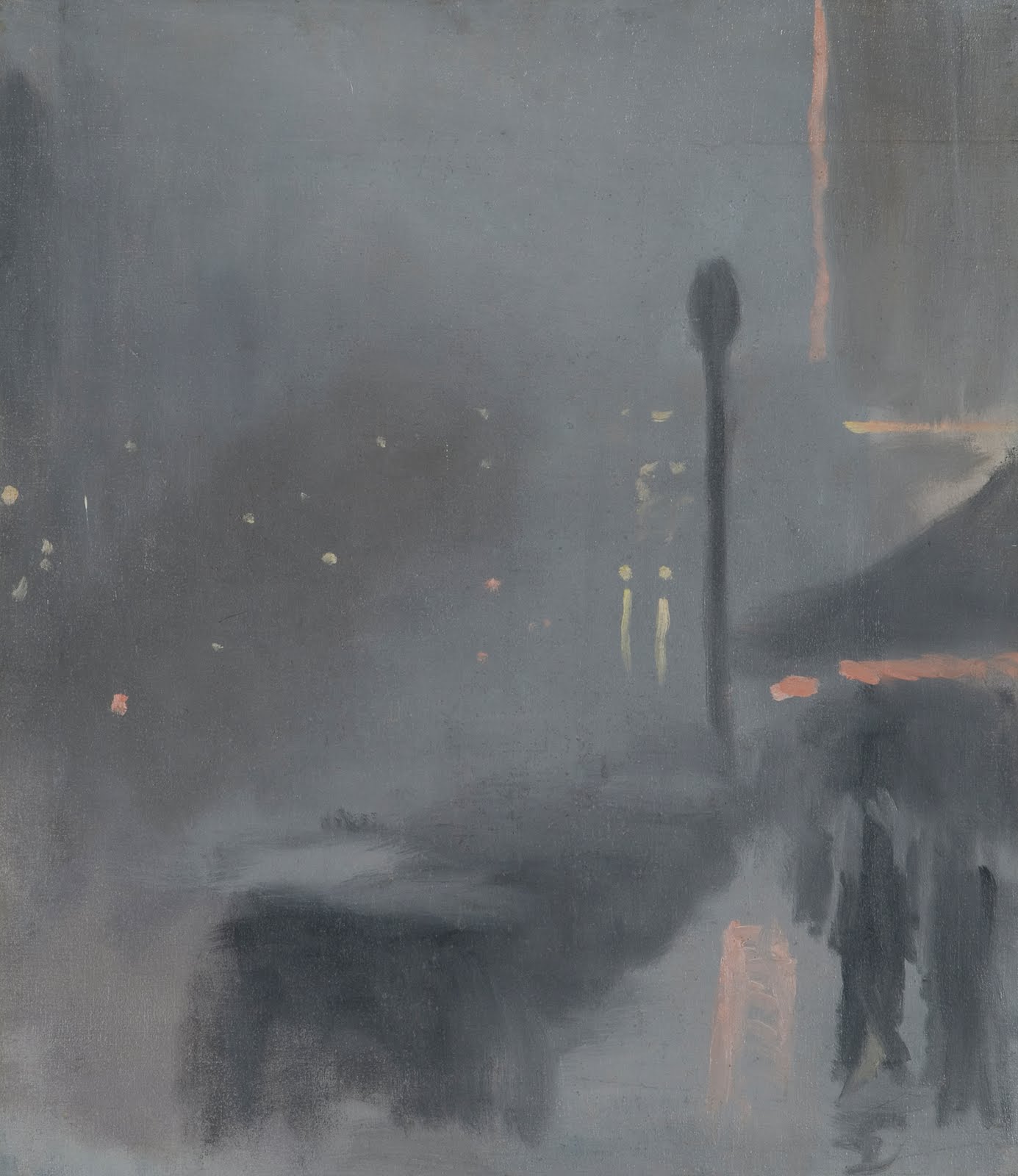Clarice Beckett is considered the most significant of the Melbourne group of artists associated with the Tonalist painter Max Meldrum, with whom she studied from 1917. From the platform of Meldrum's instruction, Beckett developed an original aesthetic, expanding on her teacher's rigid "scientific" system of tonal construction into one that explored the poetic extensions of ambiance and place. In doing so, Beckett produced one of the most distinctive bodies of works seen Melbourne's interwar decades.
Beckett was inspired by the modernity of urban and suburban life. She composed elements of everyday modern life (cars, trams, telegraph poles, and tarred roads) into poetically-hazed city and landscapes that transcend everyday reality and hint at the infinite. Her preference for early evening or morning subjects was not for simple poetic effect. Instead, as today's demonstrates, she was drawn to the technical challenge of painting the essence of her subject within the fleeting moment; and of observing light effects and developing delicate tonal nuances that blurred the terrains of reality and illusion.


 Clarice Beckett
Clarice Beckett